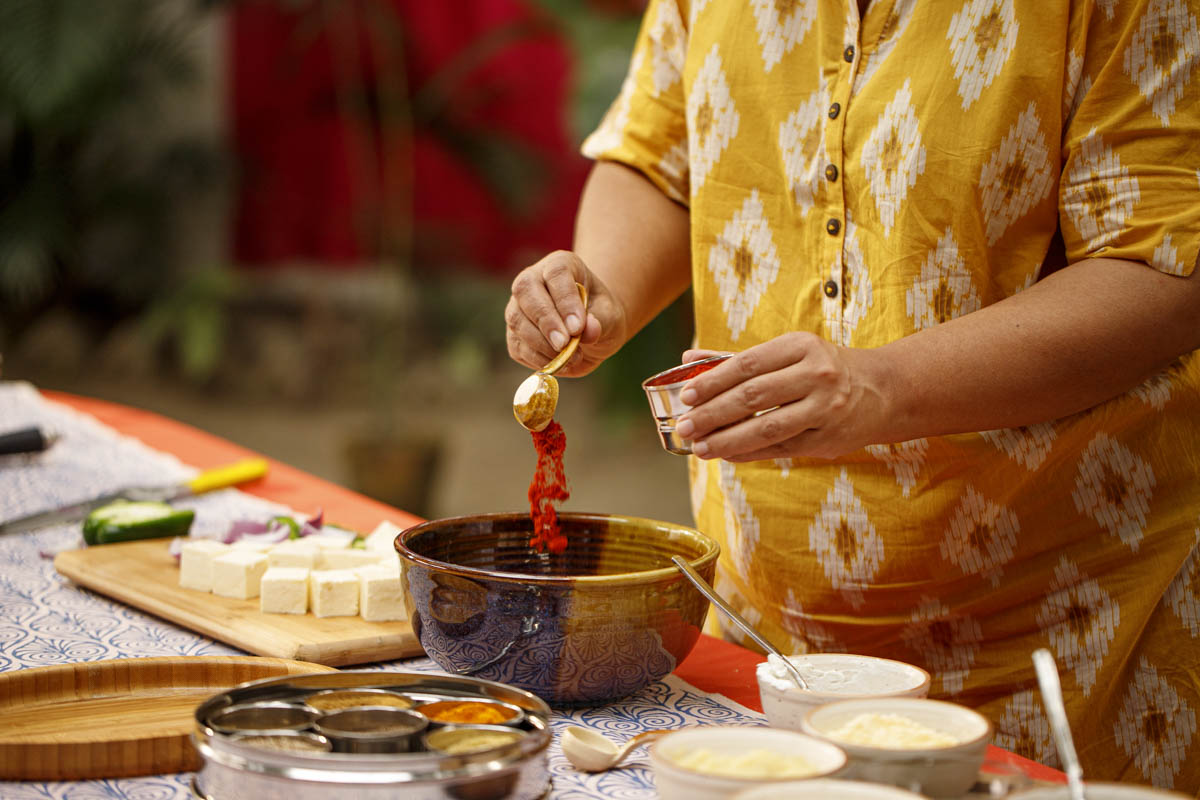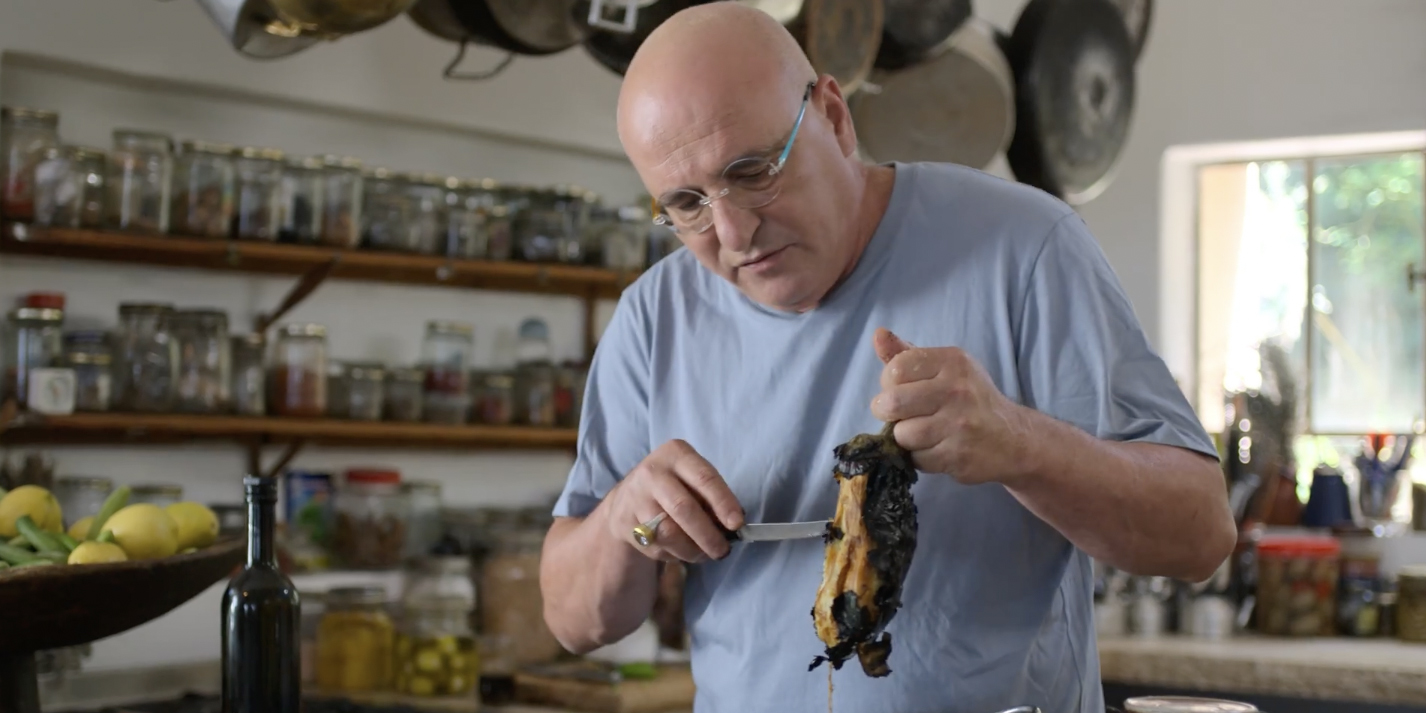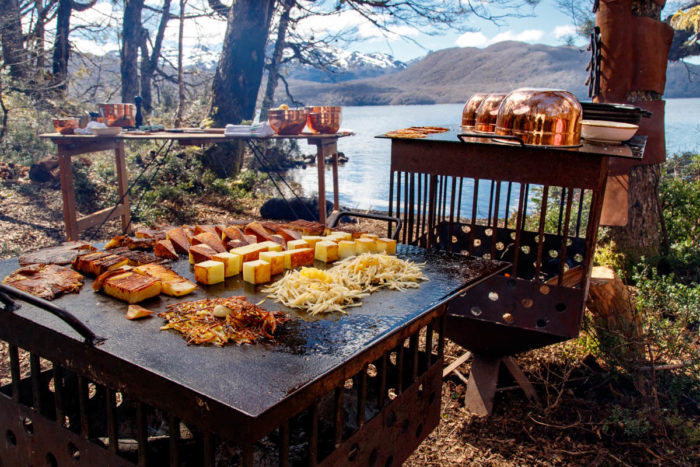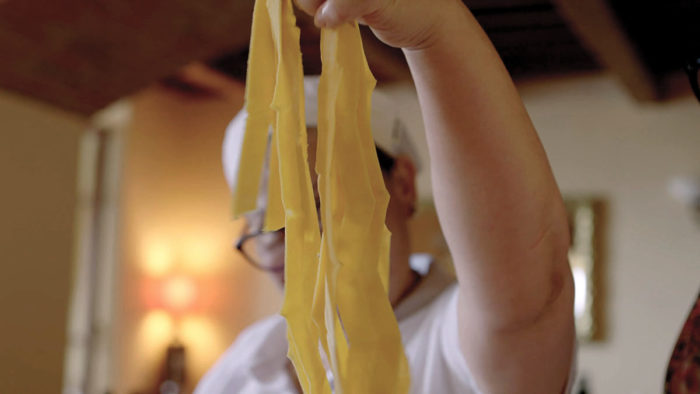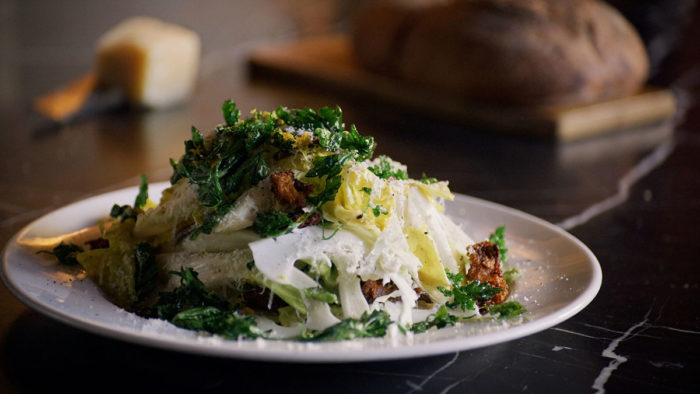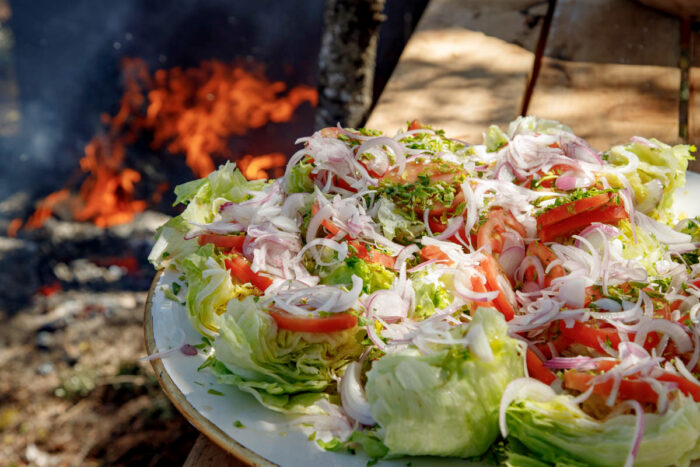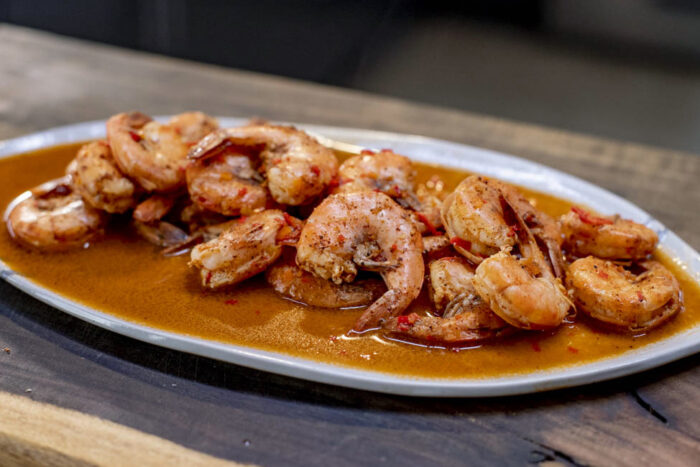
30 Essential Cooking Spices You Need To Know About
Written by the YesChef staff


Get Access to an Ever-Growing Library of Classes
Every Subscription includes:
- Unlimited Streaming of all Classes
- Watch on your phone, tablet or laptop
- Story-driven Classes, Practical Lessons
- Recipes with Step-by-Step Guidance
- 30-day Satisfaction Guarantee
- New Lessons added all the time
$14.99/mo
Billed annually

Spices: What are They?
Difference Between Whole Spices and Ground Spices
Often times spices come in whole form and are grounded by using a hand grinder, food processor, coffee grinder, or mortar and pestel. Probably one of the most common spices, pepper, for example, comes in the form of whole peppercorns, and a pepper grinder is used to make ground pepper.
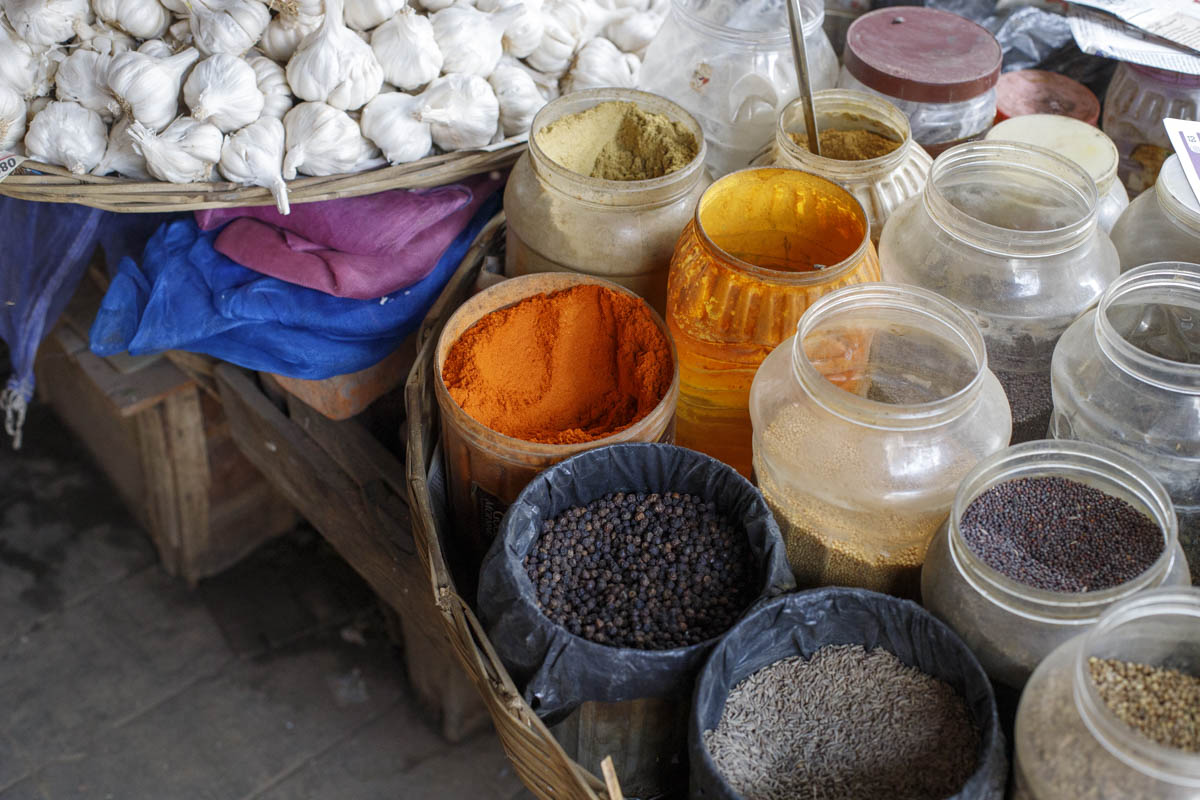
Best Ways to Store Spices
You can keep your spice collection in a spice cabinet, drawer, cupboard, pantry, or on a shelf in your kitchen. The type of jars you use to store your spices is up to you and depends on the size of your kitchen and the type of spices you have. Some people prefer to use small glass jars or tins, while others prefer to put each of their spices in a plastic container or a large spice rack.
You can also use magnetic spice containers for easy access and organization. Wherever you decide to keep your spices, make sure that you store them away from direct sunlight and moisture to help preserve the freshness and flavor.
30 Essential Spices
Here are 30 spices that home cooks should have handy in their kitchen:
Allspice: Allspice is a popular baking spice whose flavor is a blend of cinnamon, nutmeg, cloves, and pepper. Part of the ginger family, it is commonly used in Jamaican dishes. The spice is an important part of many dishes for chef Kwame Onwuachi, who is heavily influenced by Jamaican cuisine. Kwame uses whole allspice berries to make the jerk brine and jerk paste for his delicious jerk chicken recipe, and he also incorporates allspice (either whole, crushed, or ground) into his curry powder, pepper shrimp, oxtails, and as a key component of his sauces, marinades, and stews.
Bay Leaves: The bay leaf is a type of spice made from the leaves of an evergreen tree. They have a mild, slightly bitter flavor and are commonly used in Mediterranean cooking.
Caraway: Caraway is a fragrant and earthy spice made from the dried fruit of caraway plants. It is commonly used in European dishes such as sauerkraut and rye bread.
Cardamom: Cardamom is an aromatic spice made from the seeds of an herb. Cardamom, which belongs to the same family as ginger and turmeric, has a sweet, citrusy flavor and is often used in Middle Eastern, Scandinavian, and Indian cuisines. The two main types of cardamom are green cardamom, which is considered the “true cardamom,” and black cardamom, whose pods are bigger and has a smokier flavor.
Chiles: Chiles, which are the world’s most popular spice, are a type of pepper used to add heat and flavor to dishes. There are several different types of chiles, including Aleppo pepper, which is common in Middle Eastern cooking; ground paprika pepper or smoked paprika, much of which comes from chiles grown in Spain and Hungary (In fact, “paprika” means “pepper” in Hungarian); chipotle chiles and ancho chiles (commonly used in Mexican cooking); and red chili pepper flakes, which come from different types of dried red chili peppers.
Cinnamon: Cinnamon is a warming spice made from the bark of a tropical tree. Ground cinnamon has a woodsy, spicy sweet flavor and is commonly used in baking and in dishes throughout the world, from India to the Middle East to the Caribbean. Cinnamon sticks are rolled pieces of bark with a more intense flavor and aroma, and are often used to flavor teas, coffees, and wines. Chef Asma Khan often uses cassia bark in her cooking, which is also known as Indian cinnamon.
Cloves: Cloves are fragrant dried flower buds that are native to Indonesia. With a sweet and pungent flavor, they are commonly used in baking, in a variety of dishes throughout the world, and have been used in Chinese cooking for a very long time.
Coriander: Coriander is a fragrant spice made from the dried seeds of a Mediterranean herb. It has a sweet, tart, lemony flavor and is commonly used in Indian and Middle Eastern dishes.
Cumin: Cumin is a fragrant spice made from the dried fruits of an herb from Western Asia. Cumin seeds have an intensely warm and earthy flavor and are commonly used in Indian, Mexican, and Middle Eastern dishes. Ground cumin is quite popular in many spice rubs, stews, and curries.
Dill Seed: Dill seed is a fragrant spice made from the dried fruits of a Mediterranean herb. It is pungent and flavorful and is commonly used in Scandinavian, Russian, and German dishes.
Dried Herbs: Dried herbs are fresh herbs that have been dried and typically used to add flavor, texture, and aroma to dishes. Common dried herbs include oregano, sage, thyme, bay leaves, and rosemary.
Fennel: Fennel is a fragrant spice made from the dried fruits seeds of a plant native to the Mediterranean and southwest Asia. Part of the parsley family, It has a sweet, anise-like and licorice-like flavor and is commonly used in Indian, Middle Eastern, and Mediterranean dishes.
Fenugreek: Fenugreek is an herb and spice native to the Mediterranean and South Asia. It is commonly used in Middle Eastern, North African, and Indian cuisine. The leaves and seeds of the plant have a strong, slightly sweet and nutty flavor. Fenugreek leaves are often added to curries, sauces, and vegetables, while the seeds are used to flavor pickles and chutneys.
Garlic: Garlic is a type of spice made from the cloves of a bulb. It has a pungent flavor and is closely associated with traditional Italian and Chinese cooking but is used to make dishes throughout the world. Garlic powder is a form of garlic that has been dried and ground into a powder. Garlic powder is a versatile ingredient that can be found in many dishes, from pizza and pasta to meats and vegetables.
Ginger: Ginger is a spice that comes from the root of the ginger plant and is used to add a pungent and slightly sweet flavor to dishes. Ginger is commonly used in many types of cooking, from Asian dishes to baking, and can also be used in teas and other drinks. Ginger can be used as a spice in its dried or ground form, or it can be used as fresh ginger, grated ginger, or pickled ginger.
Grains of Paradise: Grains of paradise is a type of spice that is derived from the seeds of the Aframomum melegueta plant, which is native to West Africa. The grains are usually dried, ground, and used as a seasoning in food. It has a taste similar to black pepper but with some hints of cardamom, coriander, and citrus.
Juniper Berries: Juniper berries are the small, blue-black, cone-shaped fruit of the juniper tree. They have a strong, piney, citrusy flavor and are used as a spice to add flavor to meats, sauces, and pickling recipes. Juniper berries are especially common in Scandinavian and German cuisines.
Mace: Mace is the lacy, reddish covering (aril) that surrounds the nutmeg seed. It is a slightly hotter, more pungent spice than nutmeg and is used to flavor a variety of dishes such as soups, sauces, curries, and desserts. Mace is also used to flavor baked goods and is often used to top custards and other desserts.
Mustard Seed: Mustard seeds are small, round, and yellow-brown seeds that come from the mustard plant. They have a pungent flavor and are used as a spice in cooking. Mustard seeds can be used whole, ground, or made into a paste and added to dishes such as curries, stews, and pickles. The seeds can also be toasted or fried to bring out a nutty flavor.
Nigella: Nigella is an annual herb that is native to parts of Europe, the Middle East, and India. It is also known as black onion seed, black cumin, and kalonji. The spice has an aroma that is reminiscent of oregano and thyme, and a flavor that is nutty and slightly bitter.
Nutmeg: Nutmeg is a spice that is made from the seed of the nutmeg tree. It has a warm, slightly sweet taste and is used in both sweet and savory dishes. It is popularly used in baking, to add flavor to pies, cakes, cookies, and other desserts. It can also be used to add flavor to savory foods like soups, stews, curries, and sauces.
Onion Powder: Onion powder is a ground powder made from dehydrated, ground onions. It is used as an alternative to fresh onions, for convenience and for its strong, pungent flavor. It can be used as a seasoning in a variety of dishes, such as soups, stews, casseroles, sauces, and salads. It can also be used to season meats, vegetables, and even popcorn.
Oregano: Oregano is an herb in the mint family that is widely used as a culinary herb. It has a spicy and slightly bitter flavor, and is often used to flavor foods like pizza, tomato sauces, soups, salads, and grilled meats. It is also used to season oils, vinegars, and pesto.
Peppercorns: Peppercorns are the dried, unripe fruit of a flowering pepper plant. They are used as a spice and seasoning and are available in a variety of different colors, including black, white, pink, and green. Peppercorns are used to add flavor and spice to all types of recipes, from salads and soups to pastas and meats. Black pepper , with its sharp and pungent bite, is among the world’s most widely-used spices.
Saffron: Saffron is a spice derived from the dried stigmas of the saffron crocus flower, it is known for its intense reddish-orange color and unique floral flavor. It is often used in cooking to add flavor and color to dishes. It is a common ingredient in dishes from the Middle East, North Africa, and South and Central Asia, such as paella, risotto, and biryani.
Sage: Sage is an herb with a strong, slightly bitter taste and a musty, slightly camphor-like aroma. It is most commonly used in cooking to enhance the flavor of poultry, pork, and stuffing. It is also used to flavor sauces, soups, stews, and vegetables.
Sea Salt: Sea salt is a type of salt that is produced by the evaporation of ocean water. It is generally coarser than table salt and contains trace amounts of minerals. Sea salt is commonly used as a finishing salt to add flavor to dishes, as well as to enhance the flavor of other ingredients. It can also be used to season meat and vegetables, and to give a salty crunch to salads and snacks.
Star Anise: Star anise is a star-shaped seed pod of an evergreen tree native to southern China. It has a licorice-like flavor and is commonly used in Asian cuisines. It is often used to flavor soups, stews, marinades, and sauces, or added to desserts like poached pears or spiced cakes.
Turmeric: Turmeric is a bright yellow spice derived from the rhizome of the Curcuma longa plant. It is commonly used in Indian and Southeast Asian cooking as a flavoring agent and as a food coloring. It has a slightly bitter, earthy flavor and is often used as a primary ingredient in curry powder. It is also used to add color to dishes such as rice, soups, and sauces.
Vanilla: Vanilla is a spice derived from the seed pods (vanilla beans) of the vanilla orchid. It is used as a flavoring in baking, ice cream, drinks, and other desserts. Vanilla is also used in some savory dishes, such as Mexican mole sauces. Vanilla has a sweet, aromatic flavor that adds complexity and depth to many dishes.
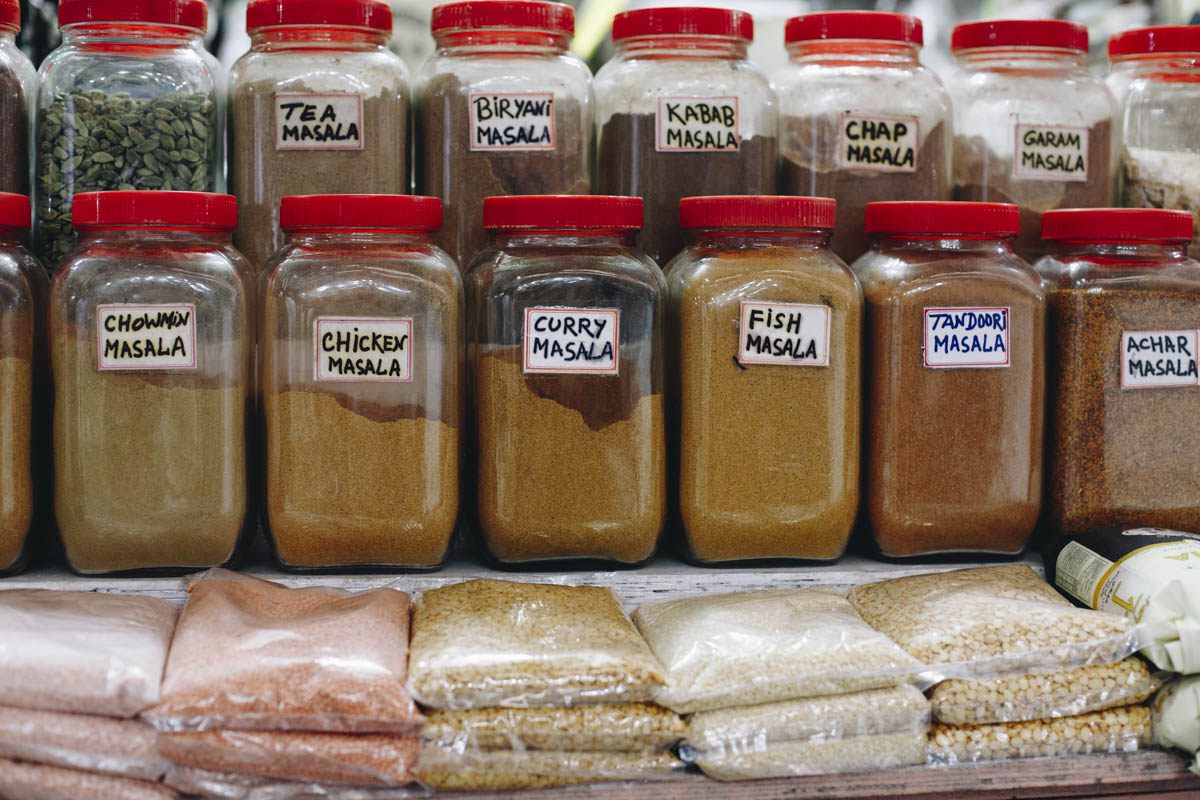
Popular Spice Blends
Africa
Dukkah (Egypt): This Egyptian spice mix consists of toasted nuts and seeds such as sesame seeds, coriander, cumin, and hazelnuts.
Ras el Hanout (Morocco): This North African spice blend often includes cumin, nutmeg, turmeric, mace, coriander, cardamom, and cayenne pepper among other spices.
Harissa (Tunisia): Harissa is a North African chili pepper paste that typically contains dried red peppers, garlic, olive oil, coriander, cumin, and caraway seeds. Chef Erez Komarovsky loves harissa to dip pita into or as a marinade for falafel, chicken, steak, or seafood. He makes an amazing harissa chicken recipe in one of his YesChef lessons, marinating chicken breast in a homemade harissa marinade before grilling it over charcoal and serving it alongside a fresh tomato and peach salad dressed in lemon juice.
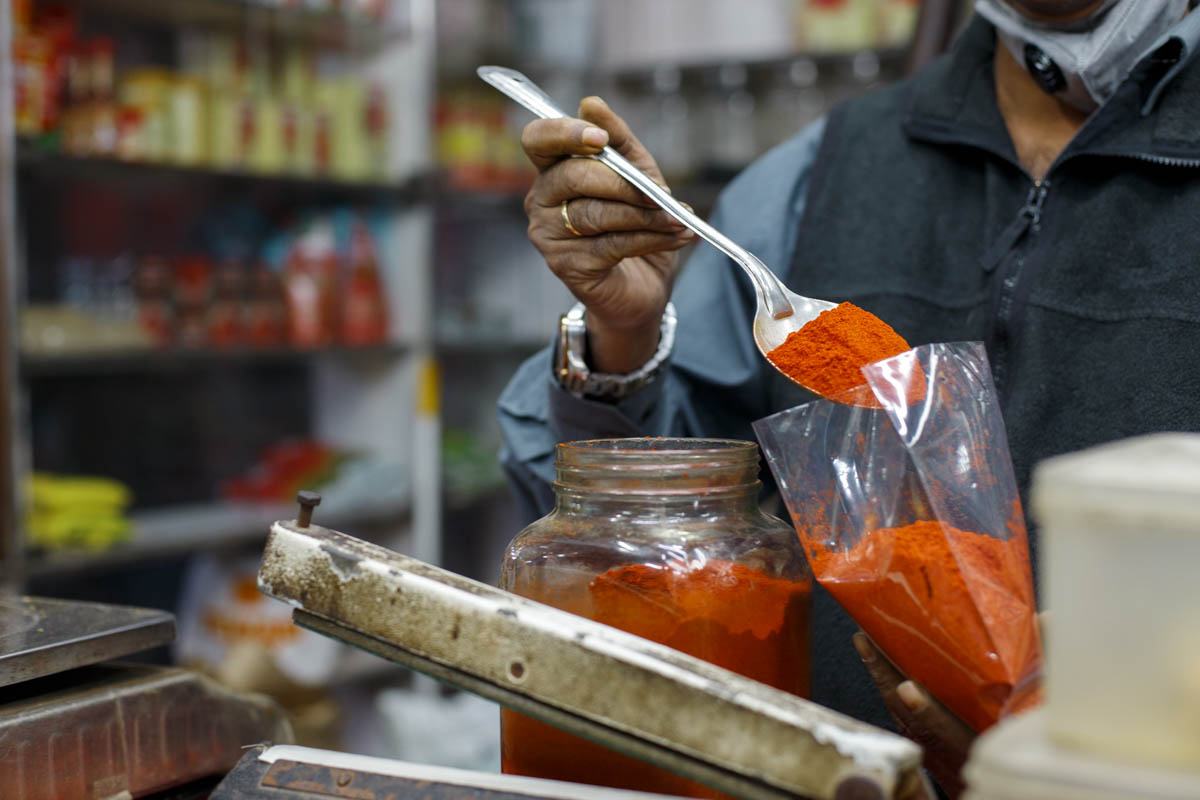
East Asia
Gomashio (Japan): Known as Japanese sea salt, this condiment, which is often eaten over rice, consists of of toasted white or black sesame seeds and sea salt.
Shichimi Togarashi (Japan): This condiment is made from spices including chile pepper, dried citrus peel, sesame seeds, poppyseed, seaweed, and mustard.
Japanese Curry Powder: This spice mix is usually made from cumin, turmeric, coriander, fenugreek, black pepper, and a variety of other spices.
Europe
Herbes de Provence (France): This Southern French spice mix features a variety of herbs including basil, rosemary, thyme, basil, crushed red pepper, dried rosemary, and dried oregano.
Khmeli Suneli (Georgia): This spice blend, or Georgian five spice, combines spices such as fenugreek, black peppercorns, savory, coriander, and dill.
Quatre Epices (France): This French spice mix, which translates as “Four Spices,” often includes black pepper, nutmeg, cloves, ginger, and cinnamon.
Indian Subcontinent
Garam Masala: This Indian spice mix is a warm blend of spices often including cinnamon, cardamom, cumin, coriander, crushed red pepper, cayenne pepper, clove, mace, and black pepper. Chef Asma Khan has her own delicious recipe for homemade garam masala, which she teaches in her YesChef lesson on Matar Pulao, a popular Indian dish. She makes this garam masala by breaking apart cassia bark and tossing it into a sizzling pan of vegetable oil, where it infuses with other spices: bay leaf, green cardamom pods, and cloves. Asma also uses the same homemade garam masala recipe to make her incredible Saffron Chicken Karma.
Panch Phoron: Also known as Indian Five Spice Blend, this Bengali spice mix combines fenugreek, nigella, mustard, fennel, and cumin.
Chaat Masala: This tangy spice blend, which is commonly used to flavor South Asian street foods, includes amchoor (dried mango powder) along with other spices like coriander, cumin, and ginger.
Curry Powder: This spice mix is similar to Garam Masala but is generally sharper and stronger and one of its main spices is turmeric.
Middle East
Za’atar: This spice blend contains sesame seeds, sumac, and thyme among other spices.
Zhug (Yemen) This Yemeni spice mix often combines hot chile peppers, cumin, cardamom, garlic, and black pepper.
Baharat: Meaning “spices” in Arabic, this versatile blend is extremely popular in Middle Eastern cuisine. Its main spices are black pepper, cumin, cloves, and cinnamon.
Advieh: Advieh is a Persian spice mix recipe often including cardamom, cinnamon, and dried rose petals among other spices.
Latin America / Caribbean
Jerk Seasoning: (Jamaica): Jamaican jerk spice is a spicy blend often containing allspice, cinnamon, nutmeg, black peppercorns, smoked paprika, thyme, crushed red pepper flakes, and cayenne pepper, among other spices.
Recado Rojo: (Mexico) This popular spice blend often includes cloves, cumin, black pepper, dried oregano, and garlic among other spices.
Adobo: This all-purpose spice blend often includes garlic, black pepper, oregano, and onion powder.
Chili Powder: Chili powder is a popular spice blend combining ancho chile (dried poblano chile peppers) with spices like Mexican oregano, paprika, cumin, garlic powder, and onion powder. Chili powder is commonly used in Mexican dishes like tacos, fajitas, and enchiladas.
United States
Dry Rub: This smoky, sweet and extremely flavorful spice blend is rubbed onto meat, fish or vegetables before they’re cooked – and is popular in barbeque cooking – often incudes brown sugar, salt and pepper, chili powder, onion powder, paprika, and garlic powder.
Pickling Spice: A recipe for this spice blend, which is used to flavor preserved fruits and vegetables, often includes whole mustard seeds, bay leaves, allspice berries, peppercorns, red pepper flakes, and whole cloves.
Poultry Seasoning: This dried spice mix recipe calls for thyme and sage as well as other spices sometimes like rosemary, onion powder, and marjoram. Poultry seasoning is commonly used to flavor Roasted Turkey and stuffing and many other foods.
Pumpkin Pie Spice: This warm spice blend, which is great for cooking in autumn and during the holiday season, is a combination of cinnamon, nutmeg, allspice, cloves, and ginger.
Conclusion
Spices and spice mixtures are an integral part of many global cuisines. They bring maximum flavor and depth to a variety of dishes, are often used to create unique flavor profiles, and have the ability to transport us to different parts of the world with just one bite. And as a result, having a variety of spices on hand in your spice cabinet offers both flexibility and creativity for any home cook.
Matar Pulao
Ingredients
Recipe


